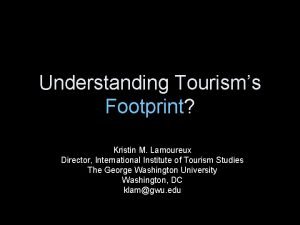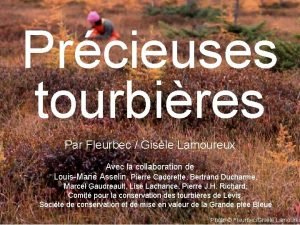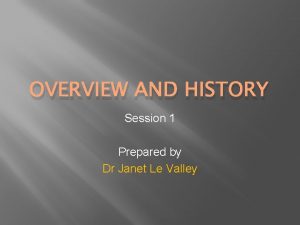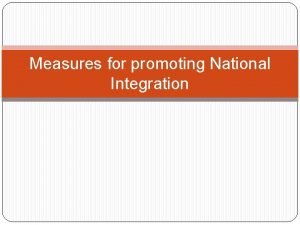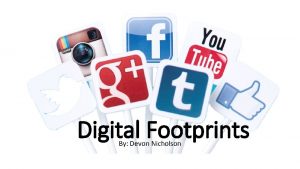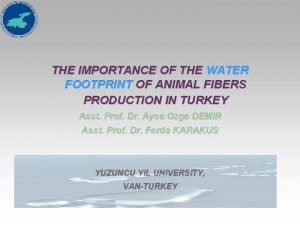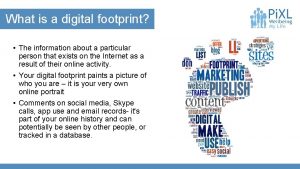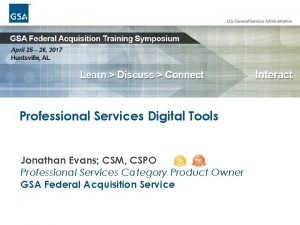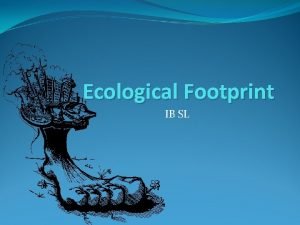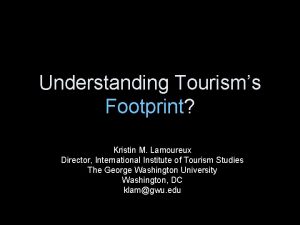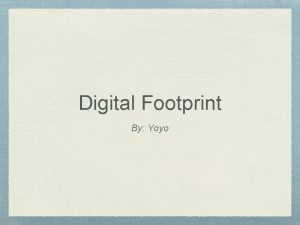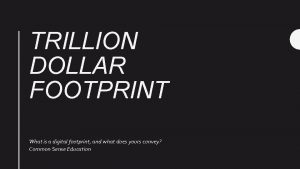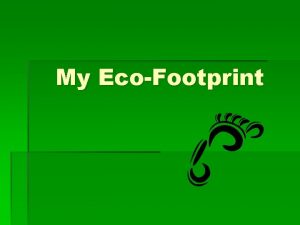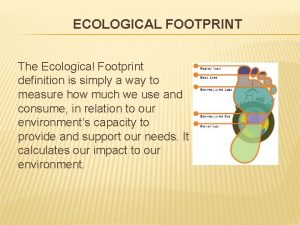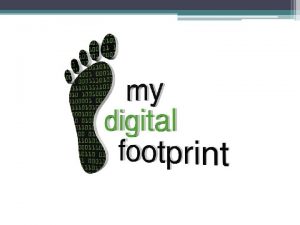Understanding Tourisms Footprint Kristin M Lamoureux Director International











- Slides: 11

Understanding Tourism’s Footprint? Kristin M. Lamoureux Director, International Institute of Tourism Studies The George Washington University Washington, DC klam@gwu. edu

How Big is the Issue? • Here are some facts: • In the USD, LOHAS (“Lifestyles of Health and Sustainability”) estimates that ecotourism, including eco-travel networks, green tourism, eco-volunteering trips, active sports trip programming, and environmentally responsible tourism, are among the fastest growing travel trends, and are estimated to be a $77 billion market. (TIES) • 80 percent of adult travelers have participated in a cultural activity while traveling (TIES) • In the Grand Canyon National Park, park rangers have shot wild deer because they became so used to eating junk food handed out by tourists that they lost their natural ability to digest vegetation. (Associated Press, 7/1/95) • A tourist in Spain uses 880 liters of water a day, compared with 250 by a local. (WWF) • Green is in!

Assessment Process for Sustainable Tourism Destination Review I. Pre-Assessment Physical Policy II. The Focus Area (Field Work) Social Context Market Structure Local Stakeholder Participation in Assessment Public Meeting Workshop/Training Consultations Assessments Market Demand Supply & Competitive Attractions Inventory Site & Infrastructure Tourism Eco Footprint Socio-Cultural & Conservation Capacity Cost Benefit III. Presentation of Results Reporting and Feedback Conclusions Recommendations Next Steps

Benefits of Understanding Tourism’s Impact • Financing for Conservation: park fees, lease fees, concessions, taxation, grants and donations • Economic alternatives: jobs • Constituency Building: motivation to conserve • Impetus for Private Conservation: demand for natural areas

Benefits of Understanding Tourism’s Impact • Uncover potential for negative impacts or costs • Discover opportunities/benefits for tourism to address social & environmental issues and help in conservation • Key Issue: Optimization vs. Utility Maximization • Go ahead, make changes, or just go?

Eco Footprint & Social Impacts • What are we assessing? – Water use – Energy use – Waste Management – Habitat conservation – Invasive species – Value of land – Guest – Host interactions

Conducting an Assessment • Get the right Information • Gather available information – Local conservation organizations – Government information (park plans, city plans, etc) – Resident attitude surveys • Experts (cultural and environmental) – Expert Interviews • Establish Baseline Data Needs • Don’t allow bias! Don’t sell.

Guidelines for Assessing Results • Compile Information • Supplement with any additional information • Draw conclusions (impacts/opportunities) • Make decisions but consider this: – Controllability of impacts – Likelihood of occurrence – Likely duration and magnitude – Breadth, depth and diffusion

Information Organization Type of Issue Potential Impacts (what would tourism do? ) Potential Opportunity and Key Assumptions Key Groups Stakeholders Expert / Contact person Local farms losing market outlets Sustainable tourism might increase demand for agricultural products Tourism may provide rational for sustainable agriculture, less development Community members, farmers, local government Local agricultural organizations, Potential impact +, 0, - +

Managing Impacts of Tourism • Policy/ Planning (Zones, Regulations, Economic Mechanisms) • Development/Construction of Facilities (Project) • Management of Resources (Audits, Green Technologies) • Management of Visitors (Controlling Visitor Flows) • Adapting the Environment (Hardening Sites) • Marketing & Promotion (Capacity Controls) • Education (Codes of Conduct, Interpretation, Educating Staff) • Research & Monitoring (Environmental Quality)

Resources Tools • Linking Communities to Conservation: A Tourism Assessment Process (GW Univ. & Cons. International) – http: //www. gwutourism. org/images_comm/TAPmanual_2 meg. pdf • Developing Naturally: A Handbook for Developing Naturebased Tourism (Clemson Univ. ) – http: //www. strom. clemson. edu/publications/Potts/devnat. html Examples • National Trust: Heritage Tourism Assessment Recommendations for St. Augstine, Fl. – http: //www. nationaltrust. org/heritage_tourism/ht_staugustine. pdf
